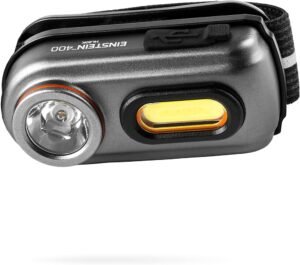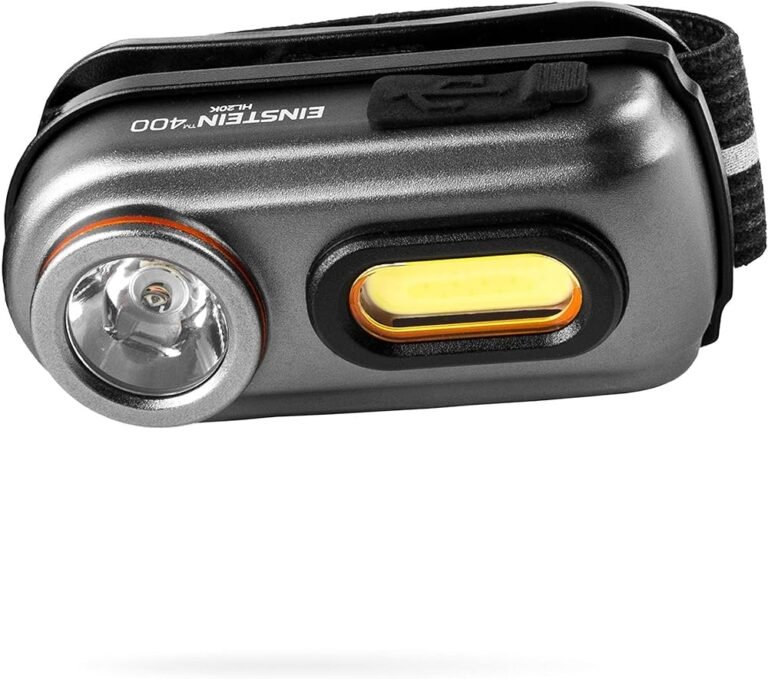Fleas are a common nuisance for dog owners, causing discomfort and potential health issues for their furry companions. Understanding how dogs get fleas is crucial to prevent infestations and keep pets healthy. These tiny parasites can quickly multiply, leading to itching, skin irritation, and even transmitting diseases. Knowing the signs of fleas on dogs and how to get rid of them is essential for every pet parent.
This article explores the common sources of fleas for dogs, including outdoor environments and contact with other animals. It also covers how to tell if your dog has fleas, the ways fleas spread and multiply, and effective flea prevention methods. From vacuuming regularly to using flea collars and insect growth regulators, readers will learn practical steps to protect their dogs from these pesky parasites. By the end, pet owners will have a clear understanding of what to do if their dog has fleas and how to maintain a flea-free household.
Common Sources of Fleas for Dogs
Dogs can get fleas from various sources, both indoors and outdoors. Understanding these common sources helps pet owners take proactive measures to protect their furry companions from these pesky parasites.
Outdoor Environments
Outdoor activities expose dogs to environments where fleas can easily jump onto their hosts. Fleas thrive in warm, humid environments, making unmanicured spots, tall grasses, and dense bushes ideal habitats for these parasites. When dogs walk through these areas, they may unknowingly pick up fleas.
Immature fleas are often found in grass, waiting for a suitable host to pass by. If a dog happens to be in the wrong place at the right time, they can quickly become a host to these opportunistic insects. This is why regular walks in parks or grassy areas can increase the risk of flea infestations.
Wildlife also plays a role in spreading fleas in outdoor environments. Animals such as raccoons, foxes, squirrels, and mice can carry fleas and transmit them to areas frequented by dogs. Even if a dog doesn’t directly interact with these animals, they can still pick up fleas from the ground where these creatures have been.
Other Animals
Contact with other animals is another common way dogs get fleas. This includes interactions with:
- Other dogs during walks, at dog parks, or during playdates
- Cats, especially outdoor cats that may bring fleas into the home
- Wild animals that visit yards or outdoor spaces
It’s important to note that any warm-blooded creature can carry fleas. When an infested animal comes into contact with a dog, fleas can easily jump from one host to another. This transfer can happen quickly and without the owner’s knowledge.
Indoor Spaces
Contrary to popular belief, even clean houses can harbor fleas. These parasites can enter homes in various ways:
- On infested pets
- By “hitchhiking” on human clothing, such as socks, pant legs, and shoes
- Through open windows or doors, as fleas can jump impressive distances
Once inside, fleas can quickly establish themselves in carpets, furniture, and pet bedding. Female fleas can lay up to 50 eggs a day, which fall off the host animal and scatter throughout the environment. These eggs can hatch into larvae within a few days, starting a new cycle of infestation.
Indoor spaces provide an ideal climate for year-round flea breeding, especially in homes where pets live primarily indoors. Areas where pets regularly sleep or rest are particularly prone to flea infestations, as these locations accumulate flea eggs, larvae, and pupae.
Understanding these common sources of fleas helps dog owners recognize the importance of comprehensive flea prevention strategies that address both indoor and outdoor environments, as well as interactions with other animals.
Signs Your Dog Has Fleas
Recognizing the signs of fleas on dogs is crucial for early detection and treatment. Pet owners should be aware of both physical symptoms and behavioral changes that may indicate a flea infestation.
Physical Symptoms
Dogs with fleas often exhibit various physical signs that can alert owners to the presence of these parasites:
- Excessive scratching: Dogs may scratch more frequently, particularly around their ears, tail base, and abdomen.
- Visible fleas: Owners might spot small, dark insects moving quickly through their dog’s fur.
- Flea dirt: This appears as small, black specks in the dog’s coat, resembling pepper or dirt.
- Red, irritated skin: Flea bites can cause skin inflammation and redness.
- Hair loss: Excessive scratching and biting can lead to patches of hair loss.
- Pale gums: In severe cases, flea infestations can cause anemia, resulting in pale gums.
- Hot spots: These are areas of inflamed, infected skin caused by excessive licking and scratching.
Behavioral Changes
Flea infestations can also lead to noticeable changes in a dog’s behavior:
- Restlessness: Dogs may appear more agitated or unable to settle comfortably.
- Increased grooming: Excessive licking, chewing, or biting at their skin and fur.
- Avoiding certain areas: Dogs might stay away from carpeted areas or specific rooms if fleas are present there.
- Changes in sleeping habits: Discomfort from fleas can disrupt a dog’s normal sleep patterns.
- Unusual aggression: Some dogs may become irritable due to the constant itching and discomfort.
- Shaking or tilting of the head: This can indicate the presence of fleas in the ears.
To confirm a flea infestation, pet owners can use a flea comb to check their dog’s fur, paying close attention to areas like the neck, back, and base of the tail. If fleas are detected, it’s essential to take prompt action to treat the dog and the environment to prevent the infestation from spreading and causing further discomfort to the pet.
How Fleas Spread and Multiply
Flea Life Cycle
Fleas go through four distinct stages in their life cycle: egg, larva, pupa, and adult. This process can take anywhere from a couple of weeks to several months, depending on environmental conditions. The optimal temperature for flea development ranges from 70-85°F, with a humidity level of around 70%.
Female fleas begin laying eggs within 24 to 48 hours after their first blood meal. They can produce up to 50 eggs per day, with a single female capable of laying over 100 eggs in her lifetime. These tiny, white eggs are slightly smaller than a grain of sand and are laid in batches of about 20 on the host animal. As the pet moves, the eggs fall off, scattering throughout the environment.
Flea larvae emerge from the eggs within 1 to 12 days, depending on temperature and humidity. These blind, legless creatures avoid light and seek out shaded locations such as cracks in the floor, carpets, or pet bedding. They feed on pre-digested blood (flea “dirt”) and organic debris for 4 to 18 days before spinning silk cocoons and entering the pupal stage.
The pupal stage can last from a few days to several months, or even up to a year in some cases. During this time, the developing fleas are protected from environmental hazards and insecticides by their cocoons. Adult fleas emerge from the cocoons when stimulated by vibrations, rising carbon dioxide levels, or body heat from a potential host.
Once emerged, adult fleas need to feed within a few hours and begin breeding shortly after. This rapid reproduction cycle allows flea populations to explode quickly, with 10 female fleas potentially multiplying to over a quarter million new fleas in different life stages within just 30 days.
Environmental Factors
Temperature and humidity play crucial roles in flea development and survival. Fleas thrive in warm environments with temperatures between 70-85°F (21-29°C). Higher temperatures generally favor faster development, which is why flea infestations often peak during summer months.
Humidity has an impact on flea survival. A relative humidity of around 70% or higher provides an ideal environment for flea eggs, larvae, and pupae to thrive. Moisture helps maintain appropriate conditions for developing fleas by preventing dehydration. However, humidity below 45% can be fatal to flea larvae.
Fleas prefer shaded outdoor areas with organic matter, such as leaf litter or moist soil. These environments offer protection from direct sunlight and extreme weather conditions, which can be detrimental to flea survival. Sunlight exposure can dehydrate flea populations, while extreme cold or heat can negatively impact their development and survival.
Indoor environments also provide ideal conditions for year-round flea breeding, especially in homes where pets primarily live indoors. Carpets, furniture, and pet bedding are common areas where fleas can establish themselves and multiply rapidly.
To control flea populations effectively, it’s essential to focus on both the adult fleas and their various life stages in the environment. Regular vacuuming, washing pet bedding in hot water, and maintaining clean outdoor areas can help disrupt the flea life cycle and prevent infestations from taking hold.
Preventing Flea Infestations
Regular Prevention Methods
Preventing flea infestations is crucial for maintaining the health and comfort of pets and their owners. One of the most effective ways to prevent fleas is through the regular application of flea prevention medications. These products, available in various forms such as collars, sprays, and topical treatments, can kill fleas on contact or disrupt their life cycle.
Flea collars are a popular option, but they should not replace a dog’s regular collar or be used with a leash. Some pet owners opt for flea sprays, which can be applied directly to the dog’s skin and coat before outdoor activities. These sprays may protect against fleas and other pests, depending on the product.
For those seeking natural alternatives, essential oils like rosemary, cedarwood, peppermint, and rose geranium can be diluted and used as a flea-repelling spray. However, it’s important to consult with a veterinarian before using essential oils, especially if the pet has health conditions or is on medication.
Another natural remedy is apple cider vinegar. Adding one tablespoon of apple cider vinegar to a liter of the dog’s drinking water may help repel fleas due to its acidic nature. However, it’s crucial never to apply apple cider vinegar directly to the dog’s skin.
Environmental Control
Controlling the environment is just as important as treating the pet when preventing flea infestations. Fleas thrive in warm, humid conditions, making both indoor and outdoor spaces potential breeding grounds.
- Indoor Control:
- Vacuum frequently, especially in areas where pets rest.
- Wash pet bedding regularly in hot water.
- Use a flea comb dipped in soapy water to check for and remove fleas from pets.
- Consider using insect growth regulators (IGRs) like methoprene or pyriproxyfen in heavily contaminated environments.
- Outdoor Control:
- Limit pet access to sheltered outdoor areas that could support flea development.
- Keep lawns trimmed and remove debris where fleas might hide.
- Consider using outdoor flea treatments, but consult a veterinarian first as some products may have limited efficacy.
It’s important to note that environmental flea control measures may not be necessary if on-animal treatments are performed correctly. Regular application of adulticidal products to all animals in the household can provide good flea control in most cases. This approach indirectly eliminates the environmental flea burden by killing adult fleas before they can lay eggs or rendering their eggs infertile.
However, in cases of heavy infestation, it may take several months for all resident immature fleas to mature and be eliminated. In such situations, specific environmental control measures can help speed up the process. Remember, for every six fleas seen, there may be 300 in the environment or on the pet, emphasizing the importance of treating both the animal and its surroundings simultaneously.
Conclusion
Understanding how dogs get fleas and knowing how to prevent infestations are key to keeping our furry friends healthy and comfortable. By being aware of common flea sources, recognizing the signs of fleas, and grasping how these pests spread, pet owners can take effective steps to protect their dogs. Regular use of flea prevention methods, along with keeping both indoor and outdoor environments clean, plays a big role in warding off these pesky parasites.
In the end, staying on top of flea prevention is an ongoing task that pays off in the long run. It not only keeps dogs happy and itch-free but also helps maintain a clean and pest-free home. Remember, a mix of regular pet treatments, environmental care, and quick action at the first sign of fleas is the best way to keep these unwanted guests at bay. With these strategies in place, pet owners can enjoy worry-free time with their canine companions.
FAQs
Q: What’s the primary way dogs become infested with fleas?
A: Dogs most commonly acquire fleas through direct contact with environments where flea infestations already exist. This could be anywhere from parks and gardens to visiting another dog’s home.
Q: How can fleas infest indoor dogs?
A: Indoor dogs can get fleas from several sources, including interacting with other infested animals during walks or playdates. Additionally, fleas can be brought into the home on clothing like socks and pants, or on shoes, and they have the ability to jump long distances to reach your pet.
Q: Where do dogs most frequently contract fleas?
A: Dogs typically contract fleas from their surroundings, especially when they come into contact with other animals, whether they are pets or wildlife. Social interactions, such as those with dogs in parks or with other household pets, are common sources of flea transmission.
Q: What is an effective immediate flea treatment for dogs?
A: Nitenpyram, widely known by the brand name Capstar, is an effective treatment for immediately killing fleas on dogs. It is administered as a single-use oral tablet and begins to kill fleas within 30 minutes. It’s advisable to keep your dog confined to a small area when using this treatment to prevent fleas from spreading before they die.



























+ There are no comments
Add yours